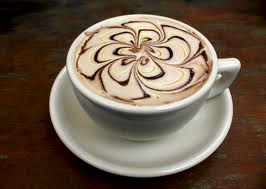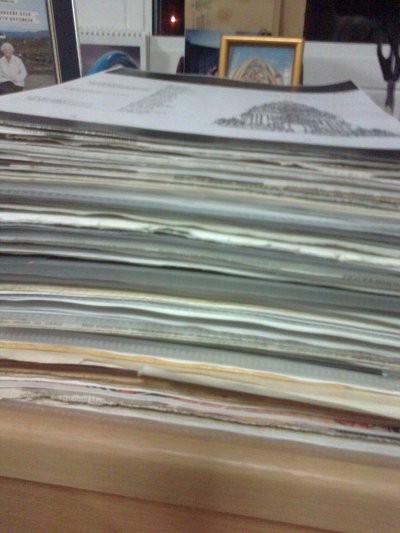Posted: 4 March 2014

“Stuff is everything” – Malcolm Lee Bradford.
It wasn’t until we moved house last year that Bradscribe realised how much stuff had amassed after a whole decade living and working in Southeast Asia. The wife groaned, not hesitating to admit that it would bring great pleasure to set it all alight.
Years to build – seconds to burn…
Even the removal men complained about the sheer weight of my stuff. Typical, lesser mortals such as these do not comprehend or appreciate the value of our stuff. Stuff is powerful; stuff is relentless. It can gather and multiply unexpectedly, like an expanding and amorphous malevolent thing from a sci-fi/horror B-movie.
Naturally, those of you writers like me who revel in research will understand that when we collect our sources in various forms, it causes a seemingly insurmountable amount of stuff to just build up at an alarming rate.
No need to fret about your stuff on your own, my friend.
Determined to conquer the curse of my clutter, it was tackled systematically, so gradually the volume of stuff has been significantly reduced. Too good to be true? Not at all; if my stuff can be controlled, so can yours! Read on…

“Every time I have moved house, those first few days – when the space is empty… are intoxicating. But… the clutter returns with all the vigour of a virulent strain of mould” – Emma Beddington.
Of all the most incredible remarks this blogger has ever heard is: “Why do you have so much stuff?”
Yes, my jaw hit the floor when that preposterous statement was uttered. Honestly, how can anyone begin to explain this question, let alone answer it?
Everyone has stuff: such is the rich tapestry of life, different people have different types of stuff. After all, the only reason we buy/rent houses is so that we can have somewhere safe and spacious to store our stuff. When we go out, we usually end up buying more stuff. When we visit friends’ storage areas homes, we judge their stuff; and the only reason we go on vacation is, invariably, to accumulate more stuff… isn’t it? This seems to be quite obvious.
However, there comes a time when we all have to step back (if there is room amongst all that stuff) and assess how to reduce some of it. For starters, there is never enough time to read everything we have; realistically, if you have not looked at a certain item in the last four years, then you probably never will. In other words, it wasn’t that inportant; discard it pronto.

“You can’t have everything. Where would you put it?” – Steven Wright.
Looking for answers on how to manage your stuff? This blogger can help.
The moment when Bradscribe noticed the sheer stuff overload came when he was annoyed to find… that nothing could be found. The most satisfying strategy to take was to halve the number of book projects in progress. Wherever possible, notes and papers no longer relevant could be discarded; some data had taken ages and lots of time and energy to acquire, so it was agonising to let go… but let go you must. Be strict.
Don’t abandon your work for a day endeavouring to attack all those piles and pillars, mountains and mounds of stuff. Believe me: you will get nowhere; after hours of sorting, sifting and scrutinizing stuff, nothing will look like it’s been sorted out! Most importantly, the office will certainly end up in a messier state than when you started!
But do not fret, Dear Reader (and Fellow Writer/Researcher), here is a handy tip on how you can declutter effectively:
Just take one hour a day (two if need be) to deal with a little bit of stuff at a time. Select a pile: deliberately sift through the tatty yellowed morsels at the bottom of it; chances are you will find items you thought were lost/forgotten forever. Stay sane. Enjoy the clear-out in gradual stages…
Every little helps.


















